KULPSVILLE, Penn. – A Copeland vase produced to mark 100 years of American Independence was among the highlights of the second tranche of the Flower collection of majolica. This model, first shown at the Centennial Exhibition in Philadelphia and then exclusively distributed by the New York retailers J.M. Shaw & Co., took $15,000 ($18,600 with buyer’s premium) at Strawser Auction Group on March 16.
The 1876 exhibition was an important one in the story of the medium of majolica. Many British ceramics factories exhibited at the event, with majolica proving a big hit with the North American public. This 10in vase has become arguably the most coveted of Copeland’s majolica output. It is modeled as three back-to-back gray eagles guarding the American flag with spears, and includes three cobalt blue shields with the words 1876 Centennial Memorial and also Washington the Father of Our Country. Examples only very occasionally appear at auction, although the (restored) vase in the Joan Stacke Graham collection sold by Doyle New York in April 2023 made $9,500.
This was the second of three auctions dedicated to the remarkable collection of Edward Flower (1929-2022) and his wife Marilyn (1930-2017). The Flowers began collecting majolica in the late 1990s, relatively late in their lives, but the bug bit them hard. Across a trio of sales (the first held last August, and the last taking place later this year) more than 600 pieces will be offered. London specialist dealer Nicolaus Boston has cataloged the collection for Strawser.
Of the 185 lots offered on March 16, two were expected to vie for top honors, with estimates of $25,000-$30,000 each. The first was a George Jones teapot, one of only a few known formed as a Chinese junk filled with cargo, with the cover modeled as a figure in Chinese costume. “In my 30 years of selling majolica this is the first one I’ve ever offered,” said Michael Strawser. It sold just short of expectations at $24,000 ($29,760 with buyer’s premium).
The second was a version of the Minton ‘Hare and Duck’ head game pie dish and cover, affectionately known among collectors as The Bunny Tureen. The model is one of several by the French émigré animalia sculptor Paul Comolera, who worked at the Minton factory from 1873 to 1877. Prices for these have soared above $50,000 in the past, but with several major collections sold in recent years, the market is now relatively soft. It hammered for $20,000 ($24,800 with buyer’s premium).
Another Comelera design for Minton is the 2ft 9in high umbrella stand modeled as a fawn nibbling oak leaves on a tree stump – a model based on sketches Comolera made of the fallow deer herd at the Duke of Sutherland’s residence near Trentham Hall in Staffordshire, England. With some restoration, it hammered at $3,750 ($4,650 with buyer’s premium).
Several pieces in the Flower collection were recently part of the renowned Majolica Mania exhibition that was launched in New York City in the fall of 2021, traveled to the Walters Museum in Baltimore in early 2022, and finished at Stoke-on-Trent in the UK in fall 2022. These include a circa-1875 Minton tete-a-tete in the chinoiserie taste that is one of just three complete sets known. The individual elements are a teapot formed as a lychee, a gourd-shaped sugar bowl and cover, a thistle cream jug, and two cups and saucers shaped as yellow fruit on leaves. All sit neatly on a quatrefoil tray with a pierced trellis border. In remarkably good condition, with its only imperfection being a small nick to the teapot lid, it took a solid $25,000 ($31,000 with buyer’s premium) — the top price of the sale.
Also shown at Majolica Mania were a circa-1875 pair of rustic vases modeled with peacocks by William Brownfield, and a vase of around the same date formed as a pair of herons by Brown Westhead Moore & Co., possibly designed by Mark V. Marshall of Doulton Lambeth fame. They were estimated at $1,500-$2,000 and $1,500-$2,000 respectively, and sold at $3,500 ($4,340 with buyer’s premium) and $2,500 ($3,100 with buyer’s premium).
Another rarity, best known from the collecting literature, is a Minton ink well and cover, modeled as a bird atop an upright pinecone. It’s one of only three recorded, with another pictured in Victoria Cecil’s influential 1982 catalog Minton Majolica. The hammer price for the example in the March 16 auction was $5,000 ($6,200 with buyer’s premium) against an estimate of $1,500-$2,000.
One of two known, a Wardle & Co. garden seat modeled as an ivy-clad tree trunk draped with a tablecloth sold at $4,500 ($5,580 with buyer’s premium), despite some wear and restoration. The circa-1881 design, with the crisply modeled woodpecker clinging to the side, is among the best pieces from the factory that produced large quantities of majolica in the budget-friendly price range.
It is an indication of collecting fashion that a large Palissy-style ‘art of the earth’ basin, inscribed and dated Avisseau, Tours, 1856 for French ceramicist Charles-Jean Avisseau (1795-1861), had shared the top price of the first sale at $40,000. The March 16 event included a similar teapot by the Avisseau, modeled as a snake climbing an ivy-clad tree trunk. After buying this piece in 2014, Ed Flower commissioned the contemporary ceramics sculptor Jonathan Court and the decorator Nicola Rose to recreate a missing frog cover. Both artists signed their names on the underside. It came to auction with an estimate of $3,000-$4,000 and hammered at $3,750 ($4,650 with buyer’s premium).
Continental European wares, once the slightly poorer relation to pieces by the best Staffordshire, England factories, were a strength of the first sale. Particularly well-received was a menagerie of large naturalistic models by the Massier Brothers, Choisy Le Roi, and Hugo Lonitz factories. All had lived together cheek-by-jowl in the Flowers’ Bay Shore, New York residence. Highlights in Part II included a monumental 18in model of a jay perched on a tree stump by Hugo Lonitz, estimated at $4,000-$6,000. One of only two known examples, it brought $7,000 ($8,680 with buyer’s premium).
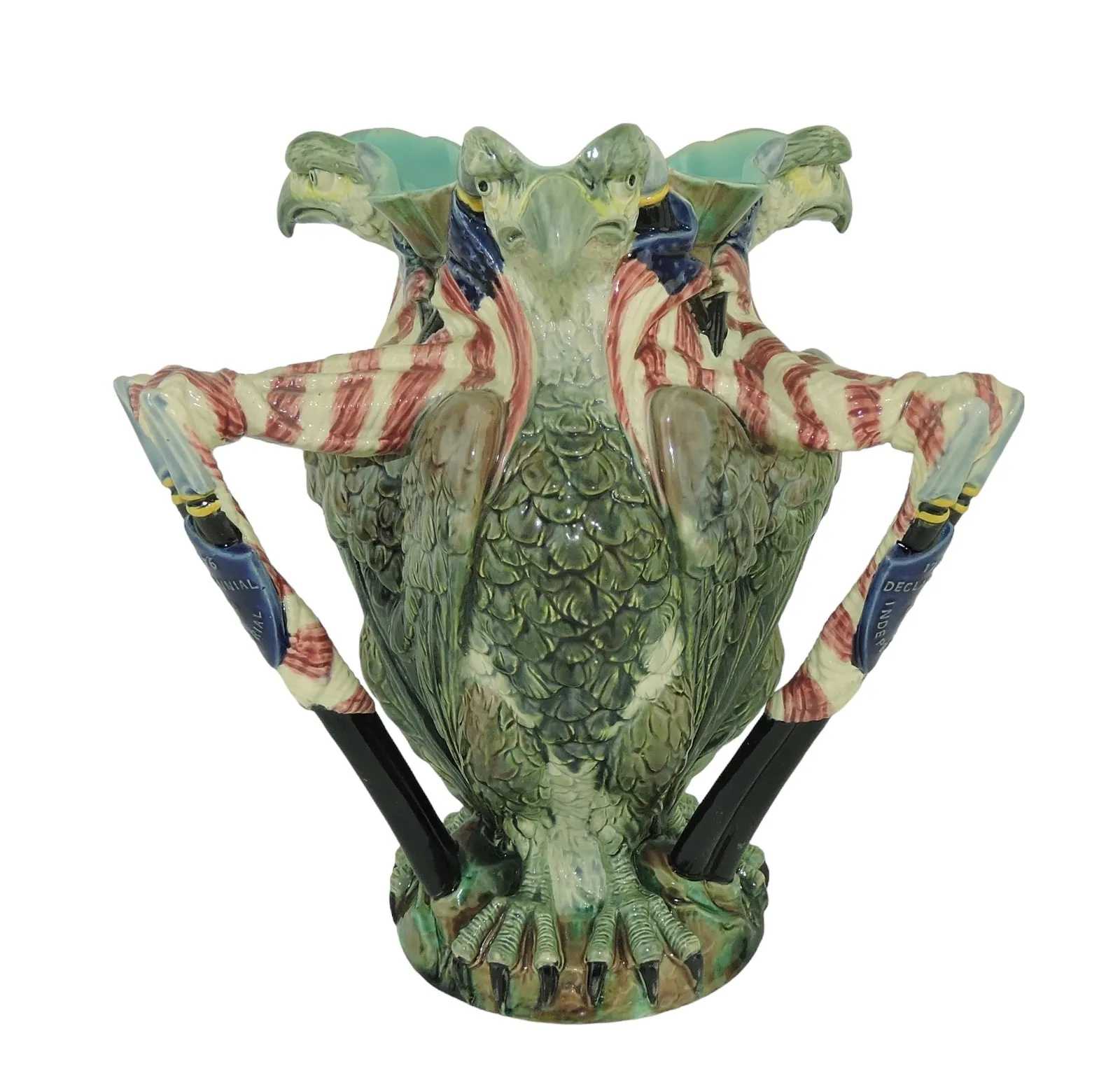
Copeland Majolica 1876 Memorial Vase, which sold for $15,000 ($18,600 with buyer's premium) at Strawser.
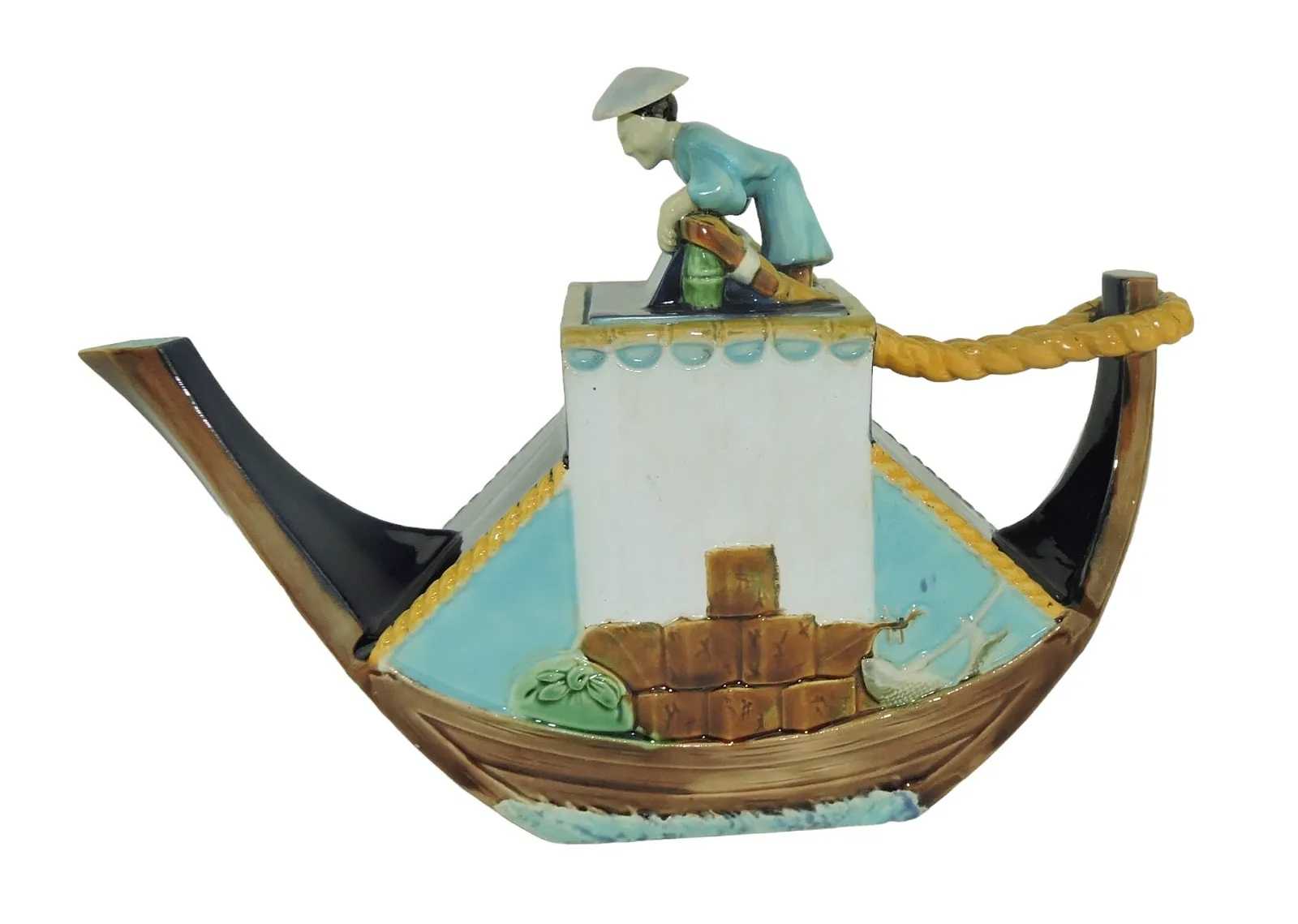
George Jones majolica Chinese Junk teapot, which sold for $24,000 ($29,760 with buyer’s premium) at Strawser.
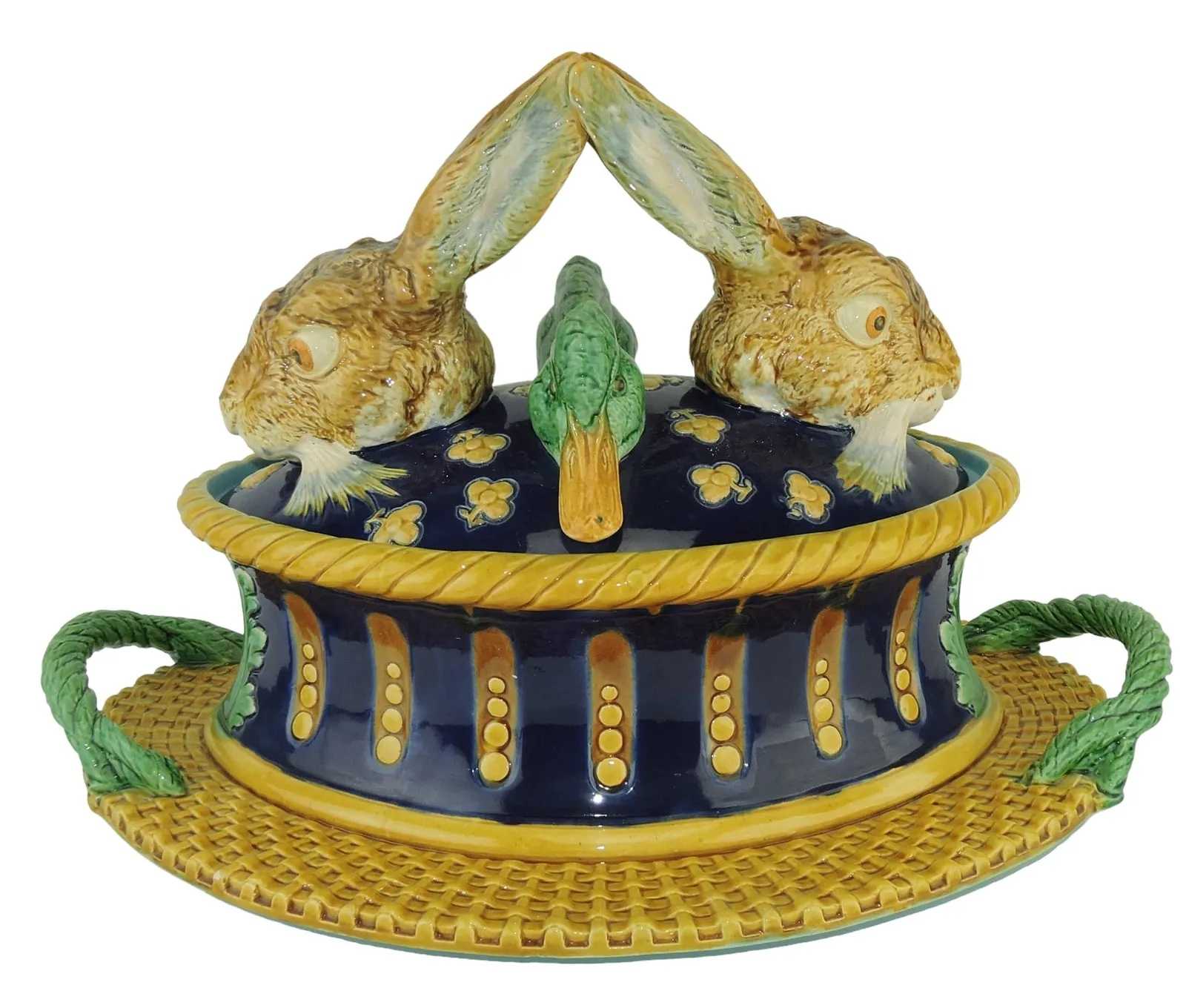
Mintons Majolica Hare and Duck Game-Pie Dish and Cover, which sold for $20,000 ($24,800 with buyer’s premium) at Strawser.
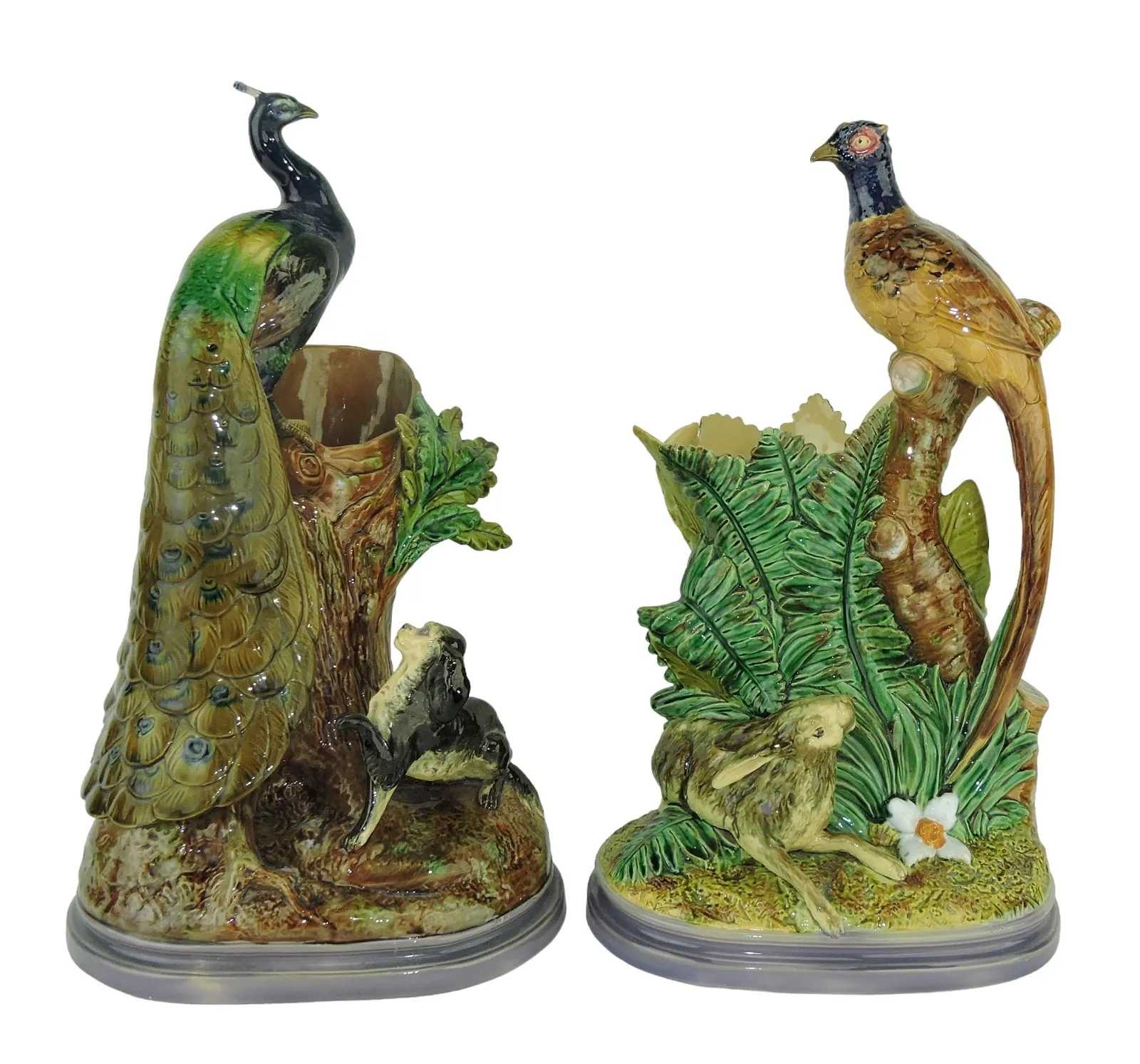
William Brownfield & Sons Rustic Vases, which sold for $3,500 ($4,340 with buyer’s premium) at Strawser.
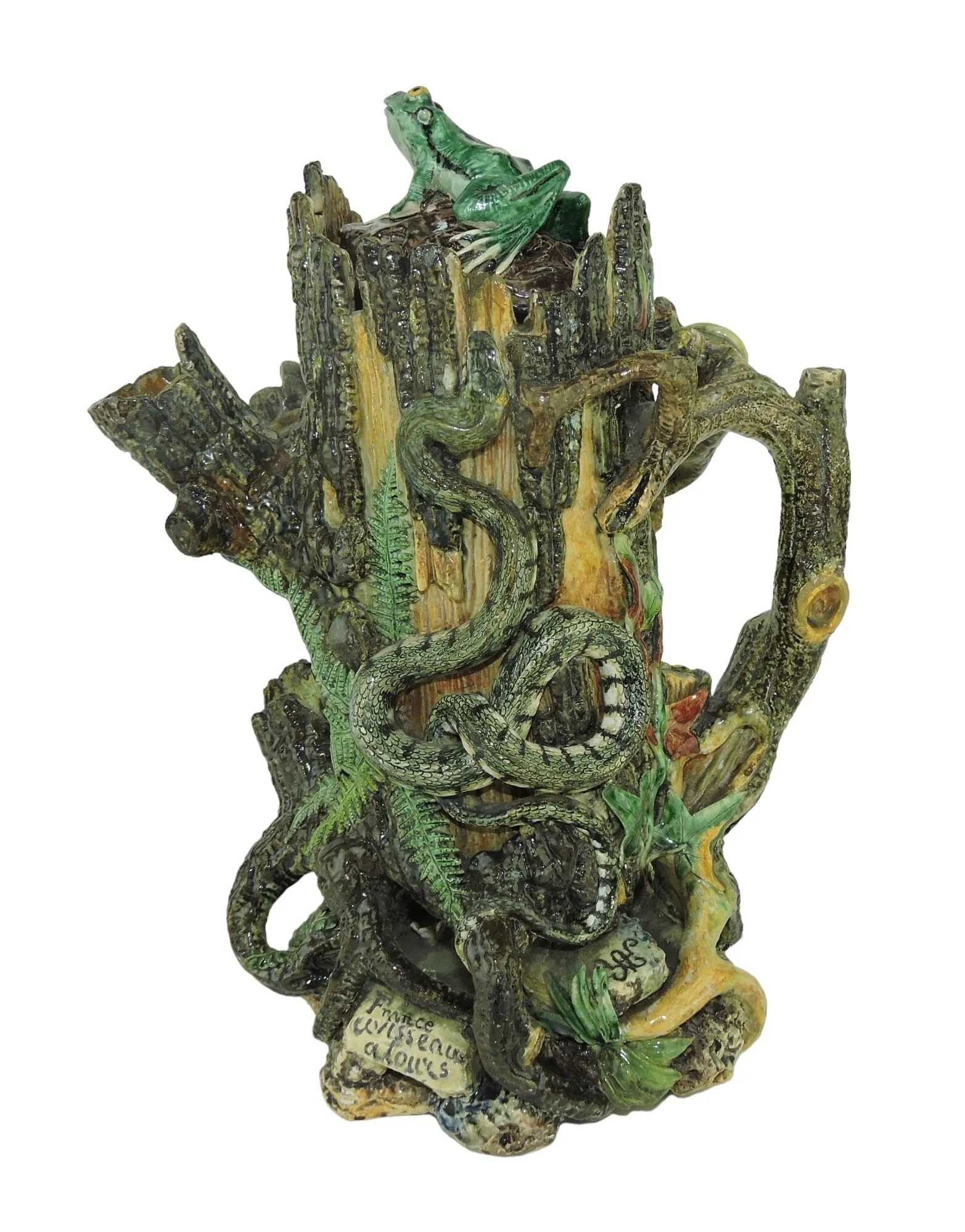
Charles Avisseau Palissy Ware teapot, which sold for $3,750 ($4,650 with buyer’s premium) at Strawser.
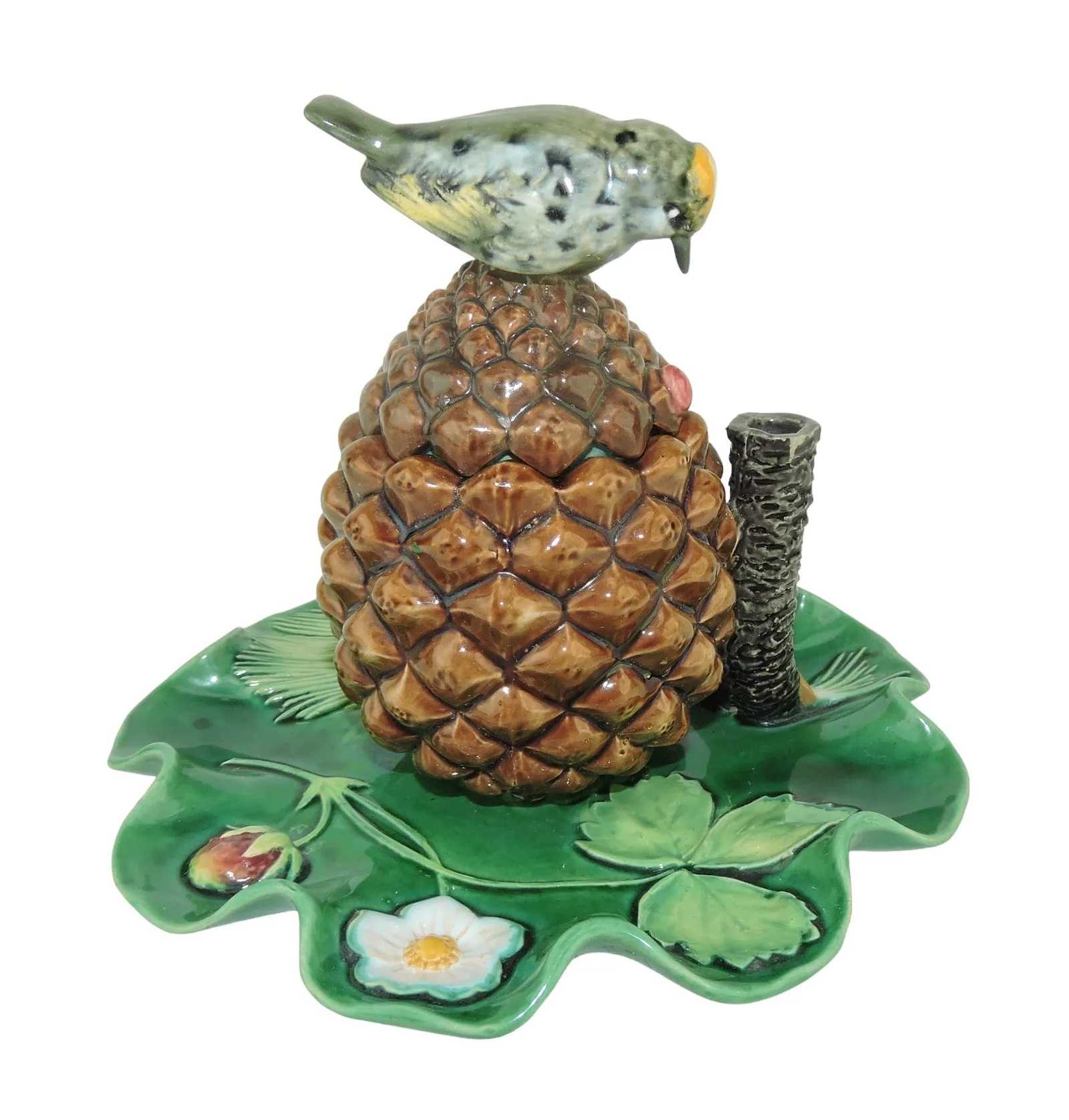
Minton Majolica Ink Well, which sold for $5,000 ($6,200 with buyer’s premium) at Strawser.
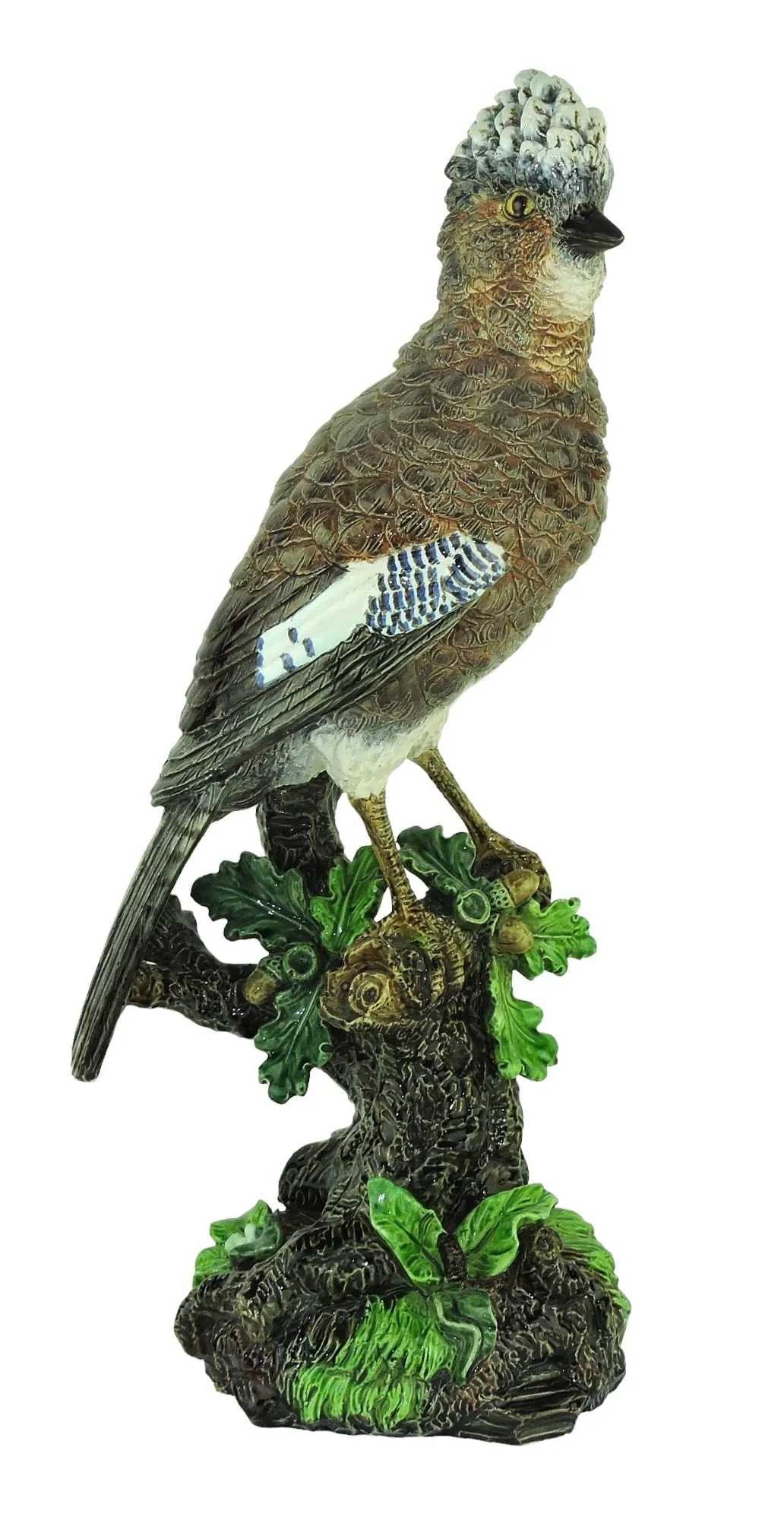
Hugo Lonitz Majolica Model of a Jay Bird, which sold for $7,000 ($8,680 with buyer’s premium) at Strawser.
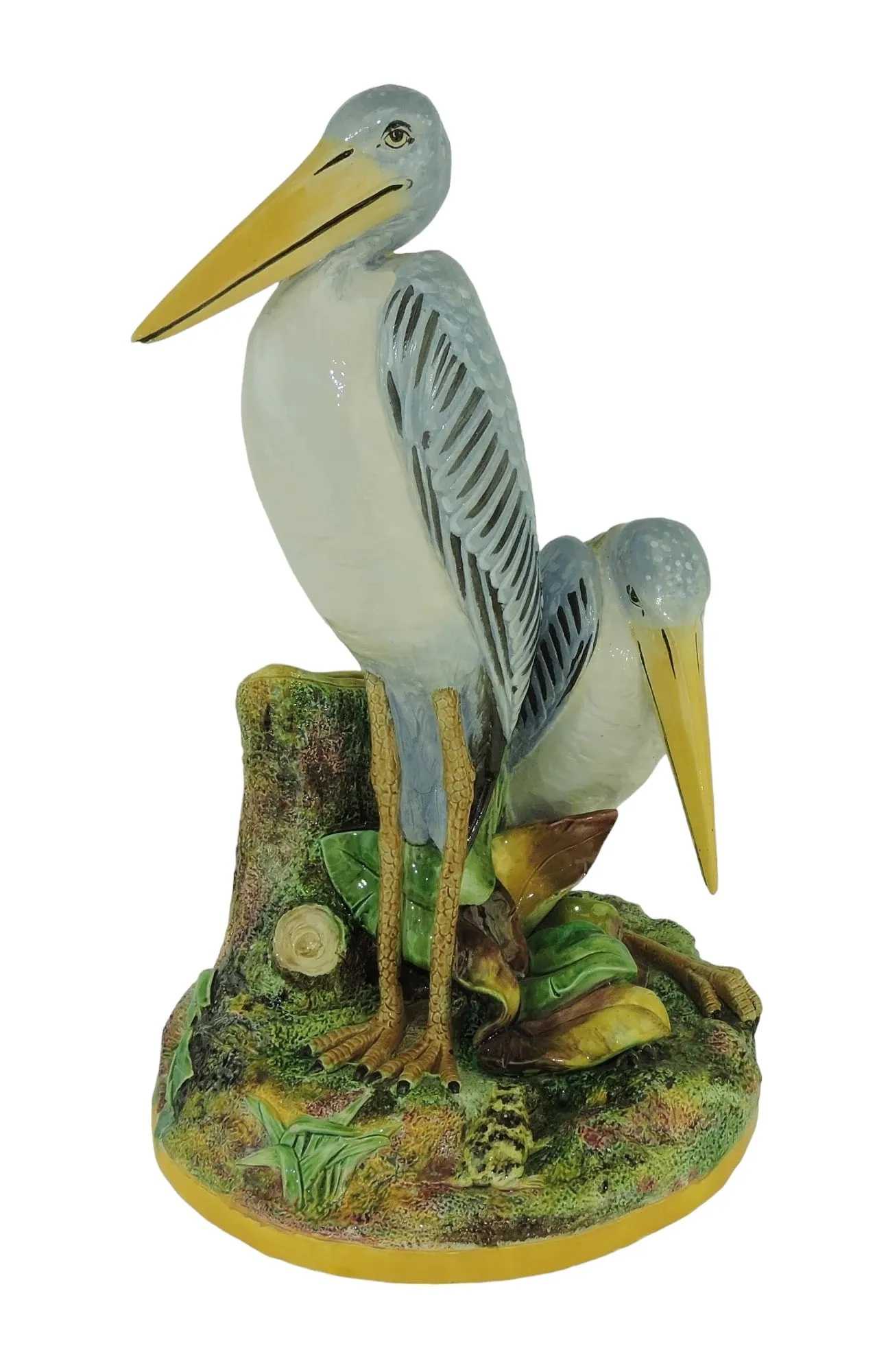
T.C. Brown Westhead Moore & Co. Majolica Flower Vase, which sold for $2,500 ($3,100 with buyer’s premium) at Strawser.
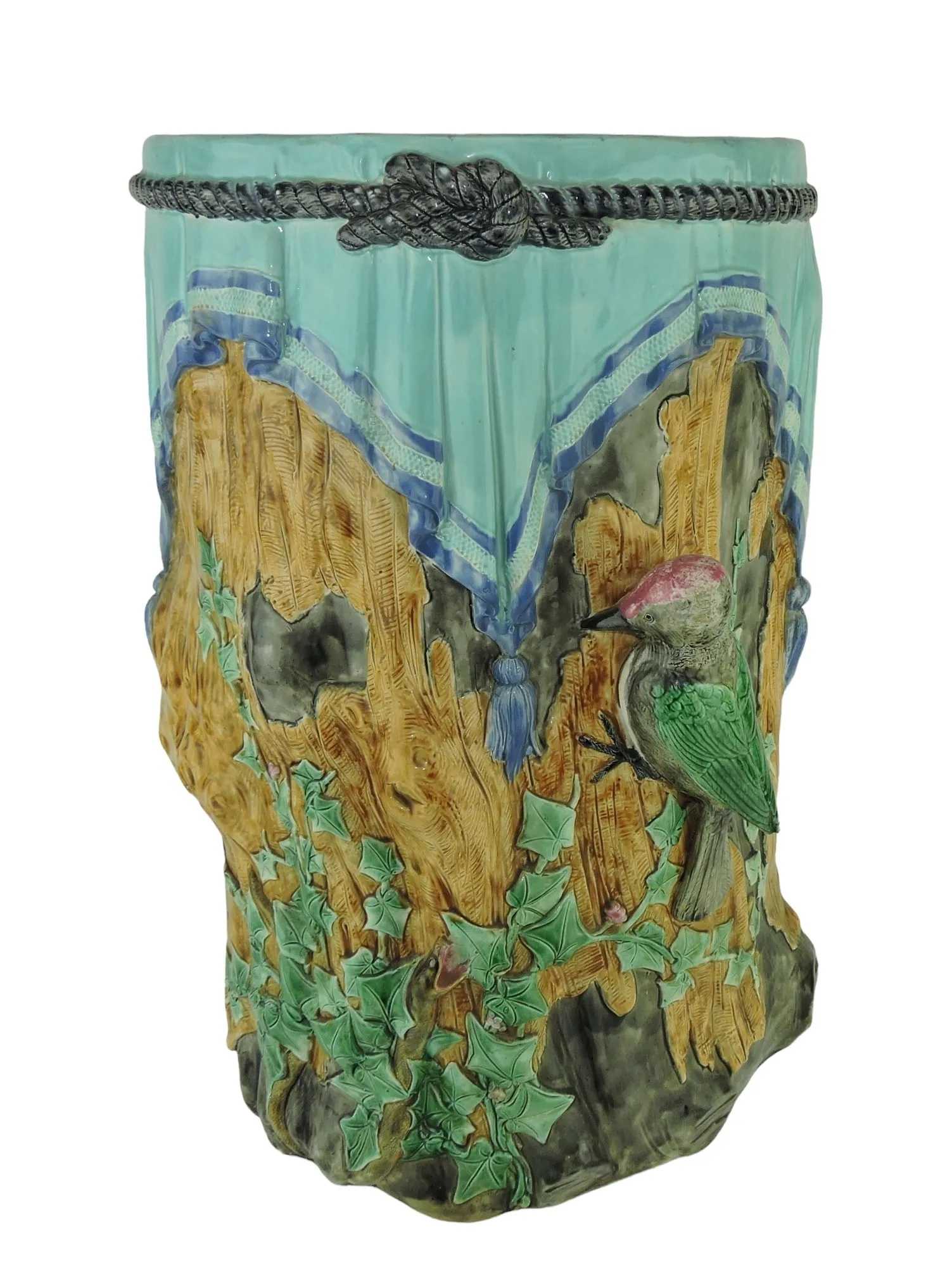
Wardle & Co. Woodpecker garden seat, which sold for $4,500 ($5,580 with buyer’s premium) at Strawser.
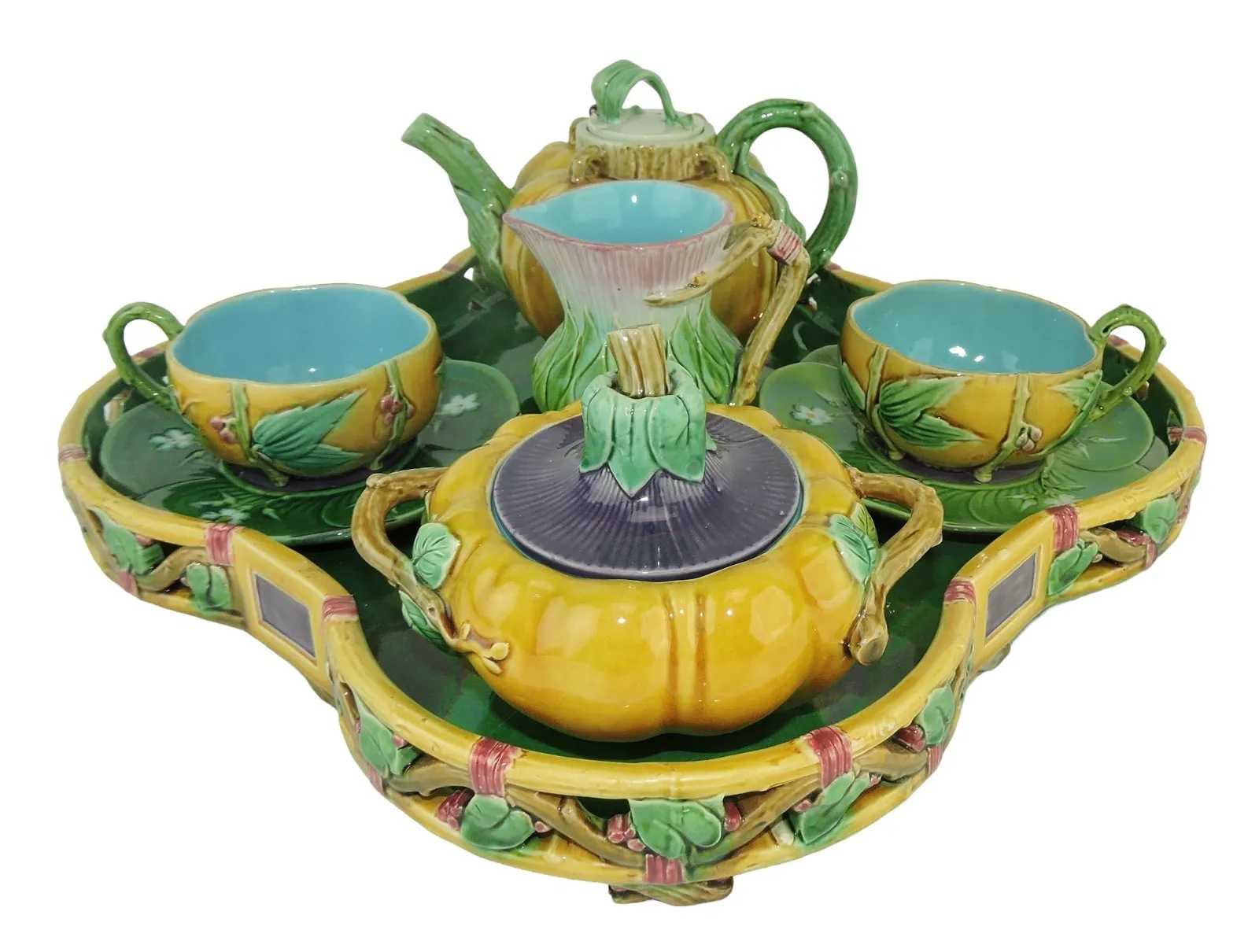
Minton Majolica tete-a-tete, which sold for $25,000 ($31,000 with buyer’s premium) at Strawser.

